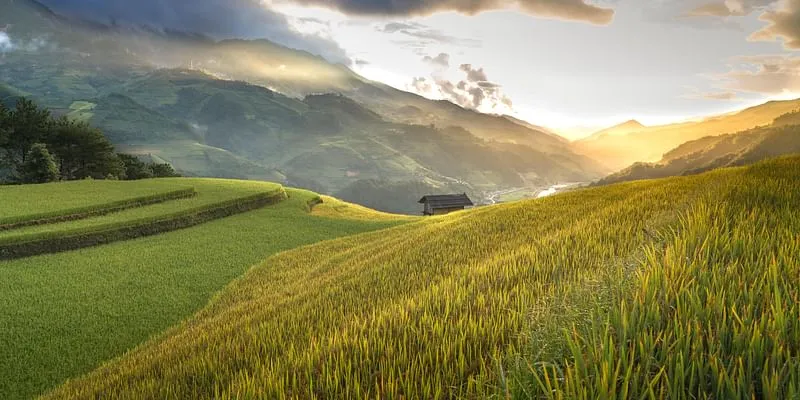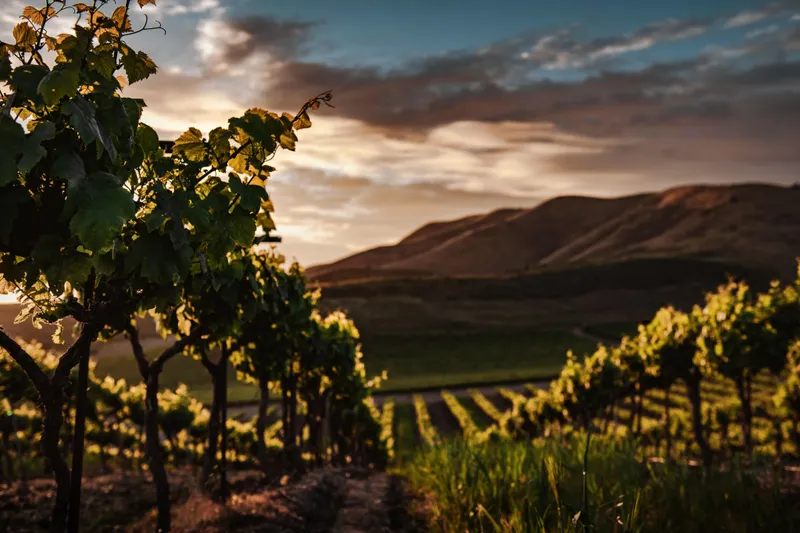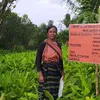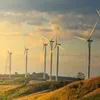US farming: Lessons in sustainability from the Meskwaki Nation
Among the vast monocrop fields in central Iowa, US, the Indigenous community practices regenerative agriculture. Could it provide inspiration for farmers battling climate change?
On a hot August day in 2020, Grant Shadden stopped weeding and looked up to the sky. A dark line of clouds was moving quickly toward him.
Shadden is the production manager at Red Earth Gardens — a 40-acre regenerative agriculture farm in rural Iowa, the US. He's seen his fair share of severe storms tear across the US Midwest, but this one was different. He watched in shock as the wind ripped trees from the ground and lifted half of the barn roof into the air.
What he witnessed was a "derecho" — a category of thunderstorm with sustained straight-line hurricane-force winds. Flattening 10 million acres of crops, valued at $11 billion (€9 billion), it was one of the costliest thunderstorms recorded in US history.
Across the world farmers like Shadden are facing severe storms with increasing frequency, as well as changes in temperatures and rainfall that make growing seasons unpredictable. Agriculture also contributes to climate change, accounting for 10 percent of all greenhouse gas emissions in the US, according to the Environmental Protection Agency.
Alternative ways of farming
To anyone looking out over the vast expanses of corn and soy that cover Iowa today, conventional agriculture may seem natural. But Shadden points out that a long time before the first ploughs broke the Midwestern prairie in the 1830s, Indigenous people practised regenerative agriculture here.
When it comes to sustainable farming, Shadden believes a lot could be learned from Red Earth Gardens, which carries forward the regenerative approaches of their ancestors. The farm — which is situated on the Meskwaki Nation's Settlement, an unincorporated community on land the tribe purchased from the government in 1857 — focuses on resilience and has adaptation to the climate crisis as a core concept.
The farm combines a grounding in Meskwaki land-use ethics with permaculture methods.
"Conventional agriculture is about identifying something and then killing it to get a yield," Shadden said, explaining how standard farmers seek to dominate the land. "We're trying to partner with nature and cultivate and steward the soil and the water and the air."

Representational image
Shadden kneels and sticks his hands in the dirt next to a line of carrots in one of the greenhouses that survived the storm. He reveals delicate white threads in the black soil — mycelium mushrooms, evidence of healthy soil — and enthusiastically explains how they provide vital nutrients to the plant's roots in a symbiotic relationship. By eliminating tilling, he's encouraged these underground networks to develop. They act as organic fertilisers and safeguards against fungal pathogens, reducing the need for fertiliser and fungicide.
On the farm, diverse species of crops and other plants that attract beneficial insects are planted close together. Tomatoes and carrots grow alongside a variety of greens, and nearby blackberry bushes form a natural protective windbreak. Cereal rye, which is green all winter, covers the fields in the off-season.
Shadden said this "companion planting" means the farm produces more harvests on a smaller area of land. Besides irrigation, its only input is natural compost produced on-site.
Food security and independence
The farm is the cornerstone of the Meskwaki Food Sovereignty Initiative — launched in 2012 to preserve traditional Meskwaki agricultural practices — reducing the 1,400-member community's dependence on outside food sources and government support.
Stephanie BadSoldier Snow, a Meskwaki farmer, helped found the initiative and believes conventional farmers could draw inspiration from Indigenous perspectives on agriculture.
"Our ecological practices traditionally were designed to preserve and to mitigate the overuse and depletion of resources," said Snow, adding the value of these methods is often overlooked.
Standard practice in Iowa's conventional agriculture involves repeatedly tilling the land before planting, applying fertilisers and other products that pollute waterways through runoff, and growing vast monocultures.
Outside the settlement, Iowan farmer Robb Ewoldt grows corn and soybeans near the Mississippi River. He believes the conventional agriculture system that dominates Iowa needs to change.
"Our weather patterns are changing. There's no denying it," he said. "We're seeing differences in the amount of rainfall we get. The extremes seem to be more extreme."
In response, he's implemented no-till methods and cover crops — which reduce damage to his soil and prevent erosion in the offseason — across his farm over the past 15 years.
Financing agricultural change

Representational image
Convincing farmers to drastically alter their current lucrative practices to follow in his footsteps will be a struggle, he believes. "It's going to be kind of tough," Ewoldt said. "Farmers have a lot of money and… when farmers have money, it's hard to get anybody to change."
But tougher times appear to be on the horizon. In 2018, the US Fourth National Climate Assessment predicted yields and crop quality from conventional agriculture will decline over the next several decades due to climate variability and increased heat in the Midwest. The assessment recommended investment in changing practices.
Ewoldt sits on the Iowa Soybean Association, which recently launched a Soil and Water Outcomes Fund with the backing of major corporations to pay farmers who "produce positive environmental outcomes" like carbon sequestration.
However, the incentives are small, as are the benefits offered by federal government cost-share programmes. Ewoldt said for many farmers those incentives may not outweigh the costs of retrofitting a planter to function in a no-till field or buying cover crop seeds every year.
Linking climate change to agricultural finance and safety nets for farmers is also crucial because many benefits are realised only in the medium to longer term. Increases in yields from improved soil health, for example, can take years to accrue.
Last summer, Meskwaki farmers endured months-long severe droughts only to be doused with heavy rainfall that couldn't penetrate the dry soil. Seasonal fluctuation is also making it difficult to know when to plant crops. The farmers at Red Earth Gardens are planting more natural windbreaks to protect plants and continue to grow ancient heirloom varieties of corn, beans, and squash well-adapted to the region.
Snow feels confident about the future of their approach to agriculture, particularly given her people's history of forced relocation.
"To be pushed out of a land and livelihood that you fully understood and were comfortable with and had to continue to adapt each time that we were moved, that's what resilience is," she said.
(This article by author Christian Elliot was originally published on Deutsche Welle)
Edited by Suman Singh
(Disclaimer: The views and opinions expressed in this article are those of the author and do not necessarily reflect the views of YourStory.)








